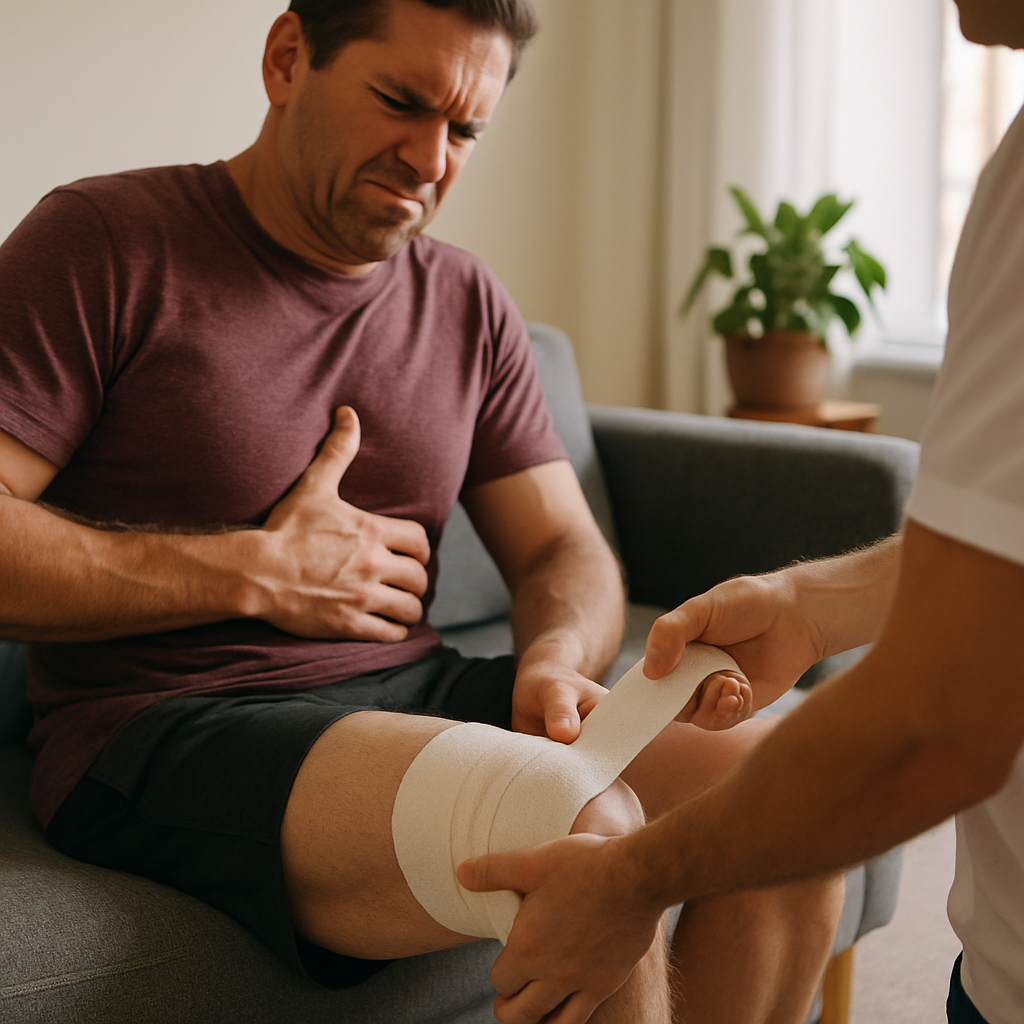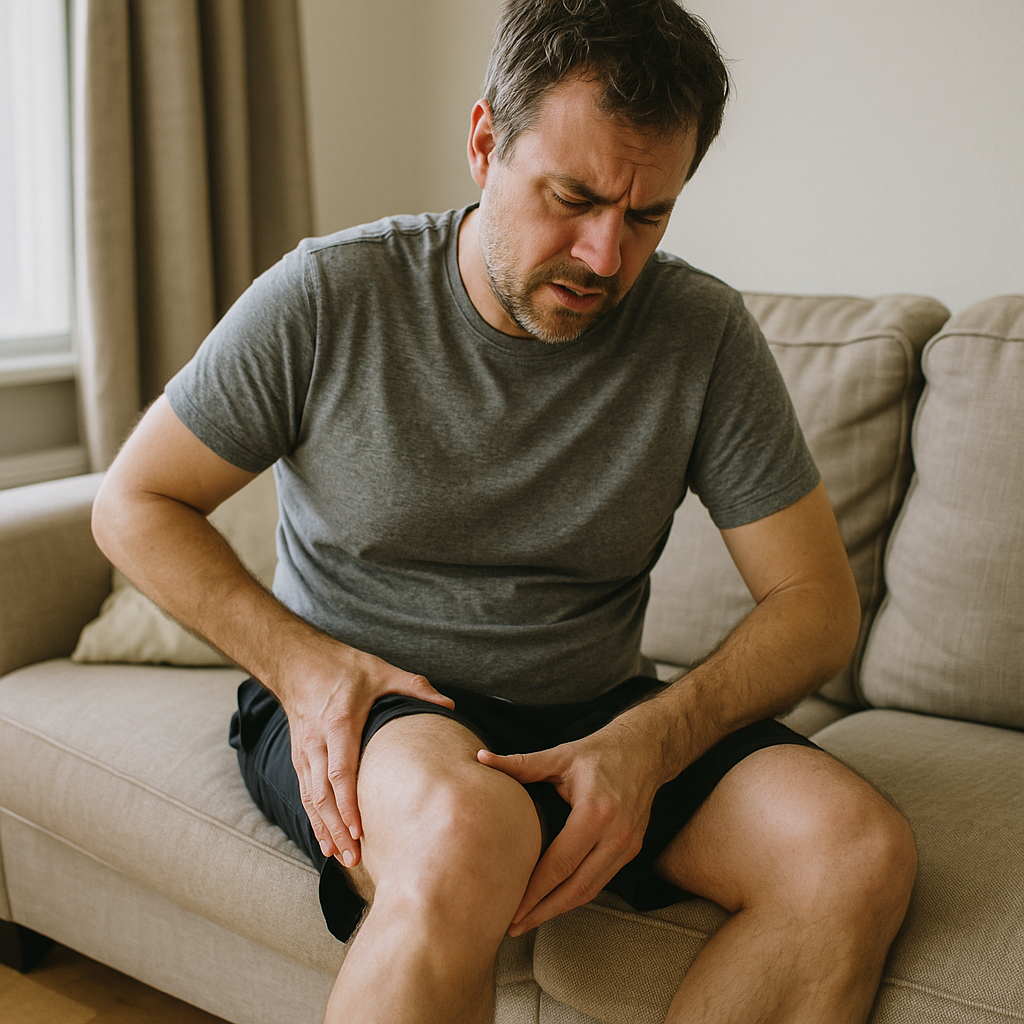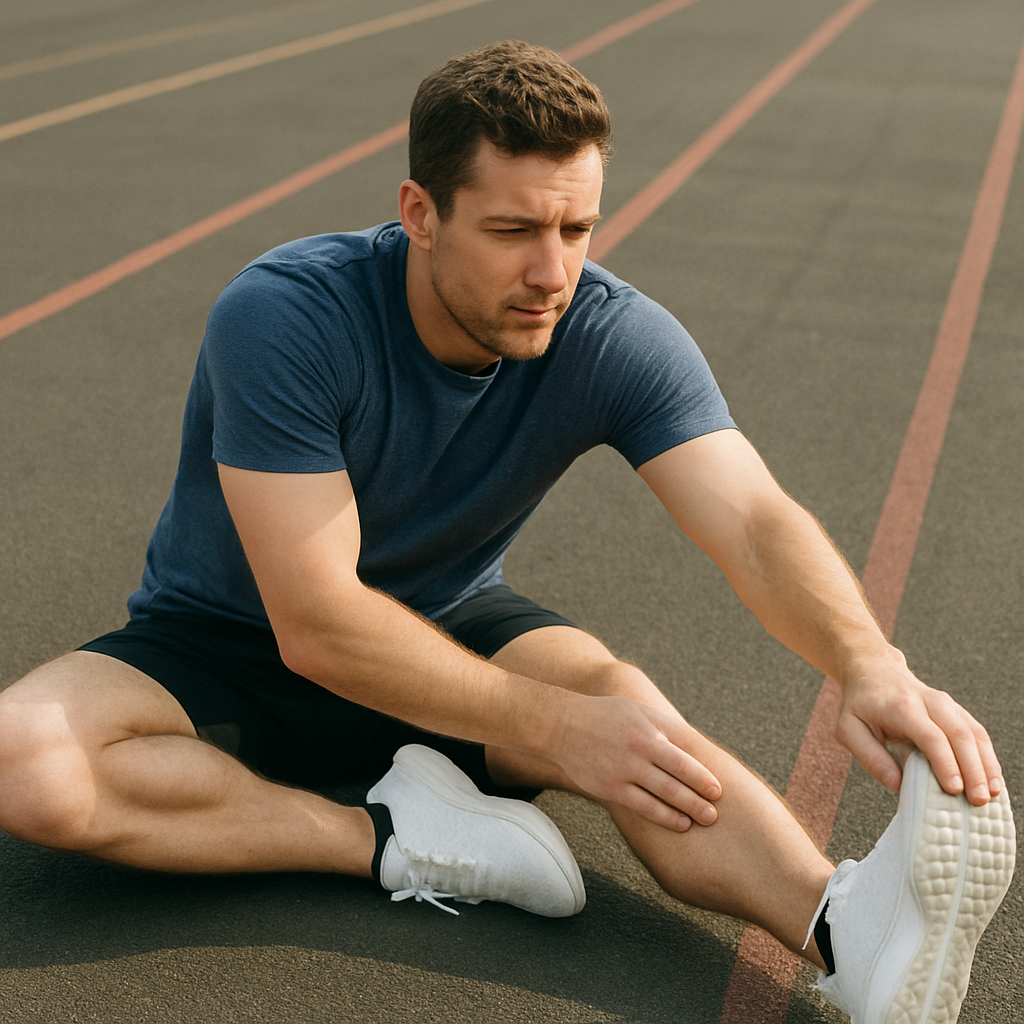Shop Now in Our Store
How to Speed Up Muscle Strain Recovery with Home Remedies and Exercises

If you’re struggling with a muscle strain, whether it’s in your back, chest, neck or leg, you’re definitely not alone. Muscle strains are super common — and frustrating. They can sneak up on you during a workout, while doing chores, or even just from sleeping funny (yeah, really). So if you're wondering how to speed up muscle strain recovery, this guide is for you. We’re diving into practical tips, natural treatments, and gentle exercises that actually help.
We'll also touch on what muscle strain recovery time really looks like, how to treat different types of strains at home, and what to do (and not do) during the healing process. Whether you’ve got an intercostal muscle strain, a thigh muscle strain, or a muscle strain in chest, this article's got your back. Literally.
Let’s get into it.
What Is a Muscle Strain and Why It Happens
A muscle strain happens when your muscle is overstretched or torn, usually due to fatigue, overuse, or improper movement. It's basically your body yelling at you to slow down — sometimes literally. This injury is often confused with a sprain (which affects ligaments, not muscles), but they’re not quite the same thing.
Strains can vary from mild soreness to severe pain that makes it hard to move. Recovery depends on the severity of the strain and how well you take care of it early on.
Common Types: Chest, Back, Neck, and Leg Strains
Some of the most annoying strains happen in areas we rely on constantly:
-
Chest muscle strain (especially intercostal muscle strain) often feels like a sharp pain when you breathe in.
-
Muscle strain in back — particularly lower back muscle strain — is notorious for flaring up after lifting heavy stuff or long hours sitting wrong.
-
Neck muscle strain can come from poor posture, sleeping in a weird angle, or whiplash.
-
Muscle strain in leg, including calf muscle strain and thigh muscle strain, usually occurs during sports or sudden movements.
Each of these needs slightly different care, but the basics are the same: rest, gentle movement, and listening to your body (which, let’s be honest, is easier said than done sometimes).
Muscle Strain Recovery Time Explained
The timeline for muscle strain recovery time depends on how bad the strain is. Here's a general breakdown:
-
Grade I (mild): Small tears, mild discomfort — usually heals in 2-3 weeks.
-
Grade II (moderate): More tearing, swelling, and bruising. Can take up to 6 weeks.
-
Grade III (severe): Complete rupture — this one's a big deal and may need surgery. Recovery could take months.
But here’s the thing: even minor strains can take longer if you don’t treat them properly. That’s why knowing how to treat muscle strain the right way makes all the difference.

How to Speed Up Muscle Strain Recovery Naturally
So, you’re not into popping pills or doing anything too invasive? Cool — natural remedies and lifestyle tweaks can go a long way in helping speed up healing.
Ayurvedic Oils and Herbal Compresses
Ayurveda, the ancient Indian healing system, has been using herbal oils to treat muscle injuries for centuries. Oils like Mahanarayan or Ashwagandha-infused sesame oil can help reduce inflammation and promote circulation. Just warm the oil a bit (not boiling — please don’t burn yourself), then massage it gently into the affected area.
Herbal compresses with turmeric, ginger, and garlic (yep, kitchen staples) can also reduce swelling. They smell... kinda weird, but they work. Apply warm compresses once or twice a day for relief, especially in abdominal muscle strain cases where topical creams might not penetrate deeply enough.
Nutrition Tips and Hydration
Don’t underestimate the power of food. Your muscles need protein, vitamin C, and magnesium to rebuild. Toss in some omega-3s for anti-inflammatory goodness — think salmon, chia seeds, walnuts.
Hydration matters too. Dehydrated muscles are grumpy muscles. Aim for water, not soda, and if you're sweating a lot or recovering from a workout, add a pinch of sea salt or an electrolyte tablet.

Muscle Strain Treatment at Home: Safe Practices
When it comes to muscle strain treatment at home, the golden rule is: don’t rush it. We get it, you want to bounce back ASAP — but pushing through pain can actually make things worse. The trick is to treat it smart, not hard.
Rest, Ice, and Compression Techniques
You’ve probably heard of the R.I.C.E method — Rest, Ice, Compression, Elevation — and yeah, it’s kind of a classic for a reason. It works well, especially within the first 48 hours after a strain.
-
Rest: Give your body time to heal. For neck muscle strain or lower back muscle strain, avoid activities that cause pain. Don’t just “walk it off” — that could delay healing or even make it worse.
-
Ice: Apply a cold pack for 15–20 minutes every 2–3 hours. This reduces swelling and numbs pain. But don’t put ice directly on your skin (unless you enjoy freezer burns, which you shouldn’t).
-
Compression: Wrapping the area snugly with an elastic bandage helps prevent further swelling. Just not too tight — you don’t wanna cut off circulation.
-
Elevation: Raise the injured area above heart level if possible. This step is trickier for a muscle strain in chest or abdomen, but it helps a lot for leg or thigh muscle strain.
Some folks skip RICE because it feels old-school, but honestly, it's still super effective — as long as you're not using it as an excuse to do nothing for two weeks straight.
Abdominal, Thigh, and Calf Muscle Strain Relief
Let’s talk about those tricky areas — abdominal muscle strain, thigh, and calf. These spots are especially sensitive because we use them for everything from walking to standing up to just sitting (seriously).
-
For abdominal strains, avoid twisting movements and heavy lifting. Gentle heat after 48 hours can help relax the muscles.
-
Thigh muscle strain? Use a compression sleeve and limit walking. Light stretching after a few days is okay — but only if the pain has decreased.
-
With calf muscle strain, try gentle ankle flexes while sitting to keep blood flowing. This can prevent stiffness and help healing kick in faster.
Listen, you don’t need fancy gadgets or expensive gear. A basic heating pad, elastic wrap, and a few frozen peas can go a long way. (Just remember to eat the peas later — after they thaw.)

Gentle Physical Exercises to Support Recovery
Once the initial pain eases, light activity can actually speed up recovery. Sitting around for too long can make muscles stiff, and nobody wants to feel like the Tin Man every time they move.
When and How to Start Stretching Safely
A lot of people ask: “When can I start moving again?” The answer isn’t super black-and-white. As a general rule, if the pain is mild and mobility is improving, you can begin with gentle stretches after 3–5 days.
Here’s a few tips:
-
Never stretch to the point of pain. Discomfort? Fine. Sharp pain? Nope.
-
Focus on dynamic stretches like leg swings or arm circles — they improve blood flow without putting too much strain.
-
For muscle strain in back, try gentle cat-cow or pelvic tilts while lying on the floor. Trust me, they feel amazing.
Avoiding Overuse During Recovery
This is big: don’t jump back into regular workouts too soon. Even if you feel fine, the muscle might still be healing internally. Gradually reintroduce activity. Don’t try to “test it out” by lifting heavy or sprinting — unless you wanna go right back to square one.
Instead, focus on low-impact movement: walking, light yoga, maybe some swimming if that’s your thing. Slowly increase intensity and always pay attention to your body. If it hurts, stop. Seriously. Don’t ignore that little twinge — it’s trying to tell you something.
Prevention Tips: How to Avoid Muscle Strain in the Future
Alright, now that you know how to treat muscle strain, let’s talk prevention — because no one wants to go through all this pain again. The best way to deal with a muscle strain? Honestly, it's to not get one in the first place.
Here’s how to lower your chances:
-
Warm up properly. Five jumping jacks and one toe touch isn't gonna cut it. A good warm-up increases blood flow and preps your muscles for movement. Think dynamic movements — like walking lunges, light jogging, or arm swings.
-
Don’t skip mobility work. Stretching after workouts and regularly doing flexibility exercises (hello yoga) helps keep muscles lengthened and less prone to injury.
-
Strengthen supporting muscles. If you’re prone to lower back muscle strain, strengthen your core. Dealing with frequent neck muscle strain? Focus on shoulder and upper back stability. Weak muscles force others to overcompensate — and boom, strain.
-
Stay hydrated and eat smart. This one’s underrated. Dehydration and poor nutrition can make muscles tight, tired, and slow to recover. Your body needs fuel to function — so give it some real food, not just preworkout and protein bars.
-
Listen to your limits. If your body says “Hey, that’s enough,” it probably means it. Overuse is one of the biggest causes of muscle strain in leg, back, or pretty much anywhere.
There’s no perfect formula to avoid injury 100% of the time. But with some consistency and care, you can definitely reduce your risk big time.
Conclusion
Dealing with a muscle strain is no fun, whether it’s in your chest, back, neck, or leg. But now you’ve got a roadmap. You’ve learned how to speed up muscle strain recovery with natural remedies, smart home treatment, and gentle exercises that actually help. You’ve also seen how to avoid ending up in the same painful place again.
From intercostal muscle strain to thigh muscle strain, the key is to be patient, consistent, and not rush the process. Your body knows how to heal — your job is to give it the right conditions to do so.
So, next time someone you know pulls something and starts Googling “muscle strain treatment at home,” you’ll know exactly what to tell 'em. Better yet? Share this article — they’ll thank you later.
FAQs
Can a pulled muscle heal in 3 days?
Sometimes, yes — if it's a very mild strain (Grade I) and you treat it early with rest, ice, and care. But most need a bit longer, usually 1–2 weeks minimum. Don’t rush it, or you might end up making it worse.
Does heat speed up muscle strain recovery?
Yes and no. In the first 48 hours, cold is better to reduce swelling. After that, gentle heat can improve blood flow and ease tight muscles. Just don’t use heat too early or on fresh inflammation.
Should I massage a pulled muscle?
Gentle massage can help — after the acute phase (usually after the first couple days). Use light pressure and maybe some Ayurvedic oil like Mahanarayan. Avoid deep tissue massage right away, that can aggravate things.
How do I know if my muscle strain is serious?
If there's severe pain, bruising, swelling, or you can’t move the muscle at all — it's serious. Also, if things aren’t getting better after a week, see a doctor. You might be dealing with a Grade II or III tear.
Still dealing with muscle pain? Revisit the tips above, try the home remedies, and start slow with movement. And remember: recovery is a process — but you’ve totally got this.
💬 Share this article with someone who might need it. Everyone’s pulled something at some point... let’s help each other heal smarter.
This article is checked by the current qualified Dr Sujal Patil and can be considered a reliable source of information for users of the site.
Got any more questions?
Ask Ayurvedic doctor a question and get a consultation online on the problem of your concern in a free or paid mode.
More than 2,000 experienced doctors work and wait for your questions on our site and help users to solve their health problems every day.

